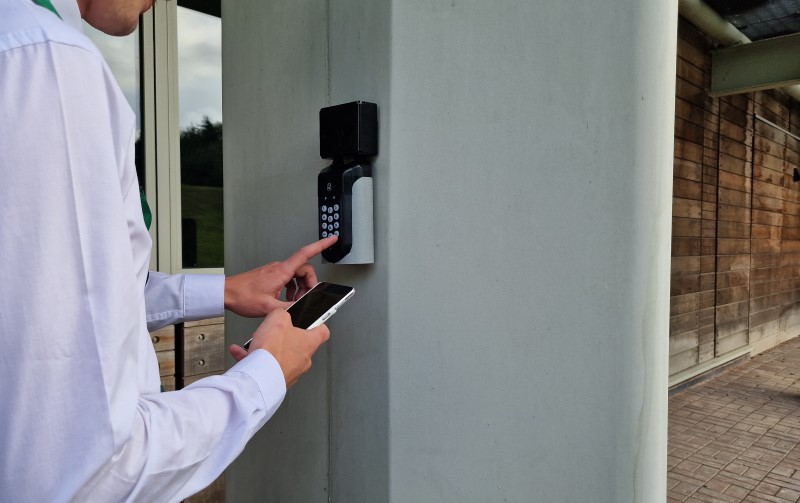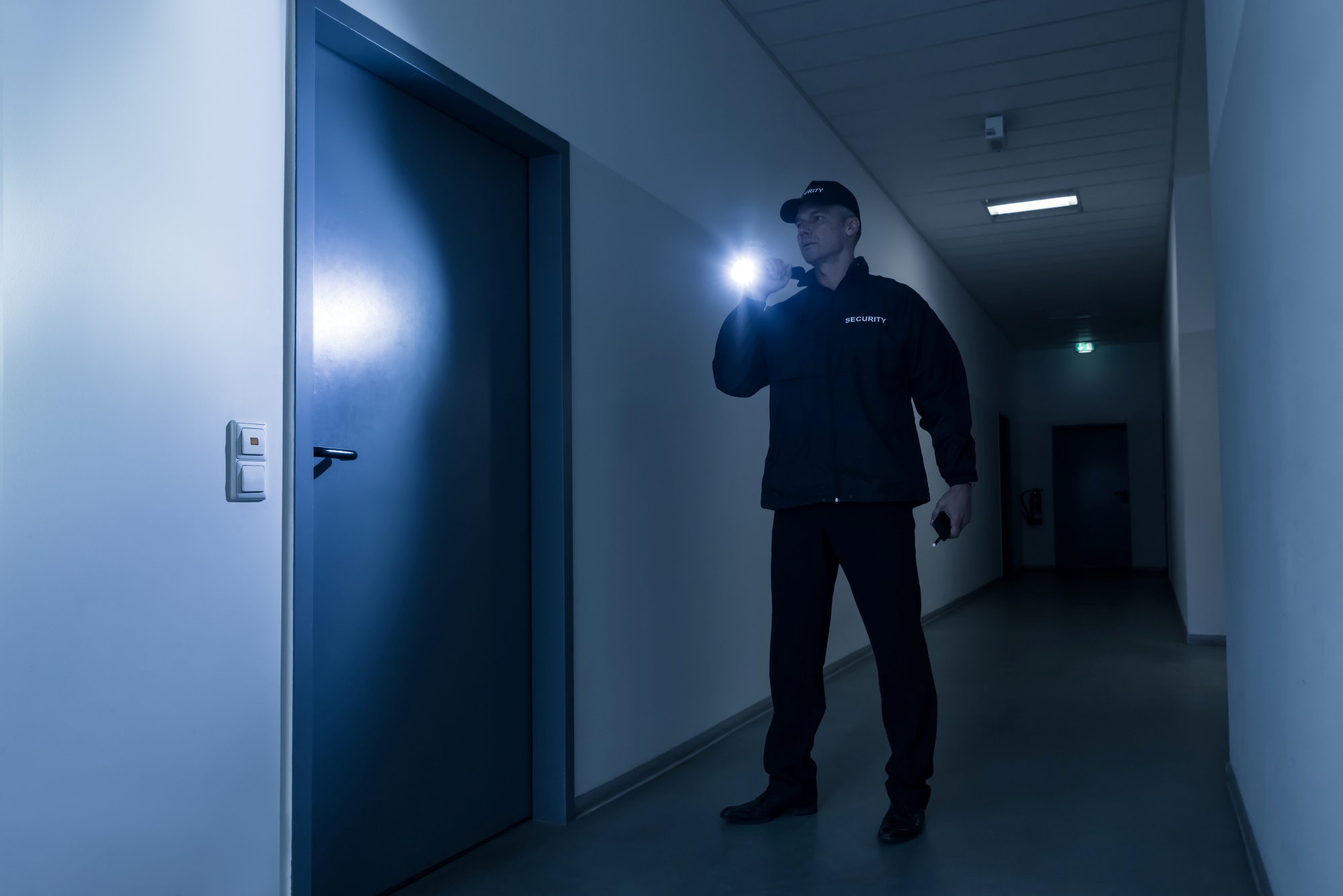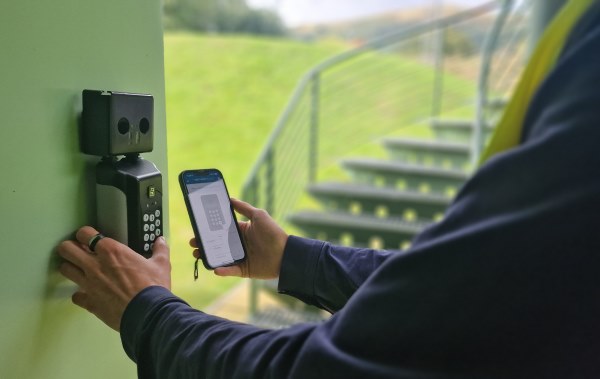The Key to Key Management:
Keyholding options and considerations for businesses when choosing a keyholding method for physical security, staff access, and facility management
When it comes to access control, a great deal of conversations in the security product industry and the media focus on digital solutions that incorporate mobile credentials, biometrics, and other cutting-edge technology. Such systems are excellent for controlling worker and guest access; nevertheless, it is often overlooked that buildings must be locked and unlocked with physical keys on a daily basis, and this arrangement is unlikely to change overnight.

One of the reasons why physical keys have not been completely replaced yet is the high cost of deploying a new digital access control system, particularly when there is no pressing need to move away from the old method that have served society for centuries. Second, while technology is rapidly evolving, there may still be resistance to change due to end-user’s scepticism about replacing a working (and, in general, physically secure) method with a new system that can still be compromised but in a different, digital way or, worse, run out of battery unexpectedly leaving no other way of entry.
Consequently, it will take time for keys to be completely eradicated, but they must be managed now to maintain both seamless business operations and the security of premises and assets. In real life scenarios, there are various approaches to keyholding, so let’s explore some of the most popular ones.
1. KEYS MANAGED BY STAFF
SECURITY:
Low
COST:
Low
POTENTIAL KEY LOSS:
High
CONVENIENCE:
Medium
A wide range of organisations, ranging from SMEs to multi-site retailers opt for an easy solution of staff handling keys. In retail, for example, this means that Store Managers are responsible for locking and unlocking the premises, as well as responding to alarms, and even arriving on-site in the event of emergency maintenance. While this might seem like a low-cost, convenient option for businesses, it has its drawbacks.
First, there is the human factor and a high reliance on staff to arrive on time. Business operations might be disrupted by mitigating circumstances like illness or heavy traffic. And there is more! What happens if a staff member in charge of keyholding decides to quit quite abruptly and walks away with keys in their pocket? Such a scenario would entail the replacement of keys and locks, which would be costly if occurred regularly.
Second, when employees are forced to respond to alarms during unsociable hours, not only is their work-life balance affected (which can lead to poor staff retention), but also their personal safety may be jeopardised. Should a lone female worker arrive on the premises when intruders could have the ability to harm not only corporate assets but also her? The answer is obvious, and the consequences could be quite dramatic.

2. TRADITIONAL KEYHOLDING
SECURITY:
High
COST:
High
POTENTIAL KEY LOSS:
Medium
CONVENIENCE:
High
For purposes of this discussion, “Traditional Keyholding” refers to a scenario in which a security or facilities management services provider holds a set of keys for alarm response, lock and unlock services, and other operations that require access to property.
Such keyholding method is most certainly secure, and the costs are proportional to the service. It provides peace of mind because clients can be confident that if the alarms go off or keys are required for any other reason, they will be brought over. However, a common disadvantage of this method is the speed of response (especially in critical situations), with an average waiting time of roughly two hours.
Aside from the cost and slower response time speed, there is another factor to consider. While keys are stored at a secure location offsite, audited regularly and transported in key lockers during security patrols, they can still be lost and misplaced, resulting once again in costly key and lock replacements.

3. MECHANICAL KEY SAFES
SECURITY:
Low to Medium
COST:
Low
POTENTIAL KEY LOSS:
Low
CONVENIENCE:
High
Storing keys at the point of entry in a key safe is an ultimate way of ensuring that keys are always available when needed. Mechanical key safes may be a cheap and quick solution, but there are several crucial considerations, especially when deployed at commercial sites.
First, think about security of such devices. Most over-the-counter key safes are not very secure, and only a few such products have received loss prevention certification to prove their resistance to intrusion.
Second, mechanical or push-button key safe codes are the same for every person using them. What if the code is shared with someone who should not have access? Or what if an employee leaves business on less than favourable terms? Mechanical key safe codes must be manually changed, and there is no record of who has accessed the keys and when.

4. DIGITAL KEY SAFES
SECURITY:
Low to high
COST:
Medium
POTENTIAL KEY LOSS:
Low
CONVENIENCE:
High
Just like with mechanical key safes, digital key safes store keys at point of entry, which benefits all involved parties. However, the security and digital capabilities of digital key safes, such as tracking, key detection, and access granting, differ greatly between brands. As a result, the selection process of the most suitable solution will depend on user’s requirements.
A major consideration, like with any access control solution, is physical security of a key safe, and whether it has been attack-tested and certified by a reputable certifying authority. The next consideration is its digital capabilities. Can access be granted and revoked quickly and remotely? What are the reporting capabilities? Are they automatic, or does the data have to be uploaded from each key safe manually? What’s the scope of digital management? Is there a limit on the number of key safes that can managed through the same account?
SentriGuard, a digital key management system from Keynetics, for example, incorporates a key safe that is LPS 1175 C1 and C3 certified, has been repeatedly attack tested and remains unrivalled in terms of security.
SentriGuard’s platform allows users to grant and remove access in a few clicks, add hundreds of properties to a single company account, manage all user and subcontractor company access, as well as run reports that inform when visits took place, by whom and for how long they who visited a particular site and for how long.
Furthermore, these key safes can be opened with either the app or a temporary code, which adds an additional layer of flexibility. It also has a key detection feature that notifies selected users when a key is not been returned to the key safe after a visit.

DECISION MAKING
In summary, whichever key management method is deployed by any organisation, the following must be considered: security of both keys and personnel, speed of access for alarms and emergencies, as well as the initial or service cost plus subsequent expenses.
Businesses must also assess the level of access tracking and reporting capabilities provided by each method to ensure that keyholding arrangements do not compromise security.
If you are interested in trying the digital key safe route, learn more about SentriGuard.